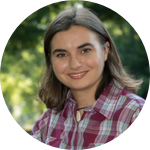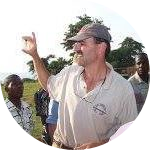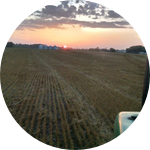About This Project
This is a follow-up project to our first experiment.com project "How much fertilizer do we really need?" where it was difficult to find any response to phosphorus (P) or potash (K) fertilizer inputs, suggesting that, in a healthy, cover cropped soil, legacy P and K may be untapped resources, while economic nitrogen rates seemed to be lower than initially thought. Soil test P in our 40 plots is in the "High" range, so we will concentrate on the effect of nitrogen and potassium in this research.
Ask the Scientists
Join The DiscussionWhat is the context of this research?
In the last 3 years, we have observed “strange” behavior in the cover cropped fields we are monitoring. We see increases in pH where no lime is added and steady concentrations of soil test phosphorus (P) and potassium (K) where no commercial P and K were added (this includes other macro-and micronutrients). This is really exciting to us (but especially to our farmers!) it seems (1) that healthy soils and cover crops are excellent at recycling nutrients and that (2) there is an untapped resource of legacy P and K (and other nutrients) that farmers may be able to tap into. In addition, we see an increases in soil organic matter which portends increasing quantities of mineralizable nitrogen (Nmin) over time.
What is the significance of this project?
The production agronomy narrative says that only the chemical component of the top 6" of soil is relevant to the farmer (and that the farmer must accept low fertilizer use efficiencies). We have now believe that for healthy soils, this is an incomplete story that works to the farmer’s financial detriment. We want to have a visible, replicated experiment over the entire corn-wheat-soybean rotation (2 years) that takes a more holistic view of the resource (soils 0-24” and above-ground biomass). Our previous Experiment.com project’s lab notes support our other observations and we would like to build on that experience of understanding how a healthy soils perform. We hope to use these data to help farmers better understand their systems, bottom line - help farmers save big on fertilizer.
What are the goals of the project?
Our central goal is to see if we can economically grow corn, wheat and soybeans in a healthy soil with lower nitrogen, less (or even no) potassium and no additional phosphorus. We’ll measure this directly by monitoring yields and comparing fertilizer input costs and soil test data. We’ll try to explain our economic performance by measuring , plant (cash and cover crop) tissue biomass and concentrations, and our soil properties (soil respiration, organic matter, macro and micronutrients) at 0-6” but also between 6 and 24” over the course of these three growing seasons. We are also hoping to use these data to try to understand the magnitude of our legacy phosphorus and potassium resources and whether/how long farmers can tap into these in the future.
Budget
Graduate Student: We'll be using a graduate student to take some of the direct lab and field labor off Buz's hands. She/he'll be paid $300 a month for 20 months ($6,000) plus $361 in fringe benefits.
Analyses: We plan to send 264 soil samples to Clemson ($11 each) and 216 plant tissue samples to Waters lab ($15 each) to keep an eye on the interaction between soils and plants over the three crops and one cover crop between corn and wheat. Postage is included in this amount.
Travel: We anticipate a total of 15 round trips to Dillon (120 miles from Columbia) and a total of 5 overnight stays in Dillon for 2 people - we anticipate separate genders and are planning accommodation accordingly.
Supplies: We'll be using 200 Solvita soil paddles to check soil respiration ($1700 for 200) and anticipate $50 a month or $1,000 total expenditure on field and lab consumables.
Experiment.com fee: an 8% fee which will come to $1,493.
Endorsed by
Meet the Team
Affiliates
Affiliates
Team Bio
Carl and Buz have collaborated on several research projects iand have a great working relationship. Buz figures out what needs to be done, Carl gets it done on the ground and Buz measures what's happening. The farmer-researcher interaction is really important as Buz and Carl typically learn from one another all the time and lend differnt perspectives to what they see on the ground.
Buz Kloot
Soil health nut, passionate about seeing soils change and the lives of farmers change with their soils. Good for the farmer, good for the customer, good for the environment.
Carl Coleman
Soil health amateur. I farm with my wife and son, and farming is all I have ever done for my adult life, 32 years of full time farming. The soil health journey is exciting and fun, going against what we have always been told about fertilizer and the soil. We love a challenge and adventure and now we have all we handle. Lower cost of production equals less financial risks. And we are doing the right thing.
Additional Information
We'll have 2 sets of 20 plots (40 ft x 100 ft) where for each set of 20 plots we'll have 5 replicates of 4 treatments (5x4=20) and we'll repeat this experiment in each of the 20 plots. Our treatments will include (1) the full nitrogen and potassium recommended rates, (2) the full nitrogen rate (no potassium), (3) 70-75% of the recommended nitrogen with no potassium and (4) half the recommended nitrogen rate with no potassium. Soil test phosphorus is in the sufficient range according the Clemson soil test values so in this sense, phosphorus is dialed out of the experiment. In the unilkely event that we do observe insufficient soil test P, we will add P to all plots.
Project Backers
- 68Backers
- 100%Funded
- $20,199Total Donations
- $152.22Average Donation





